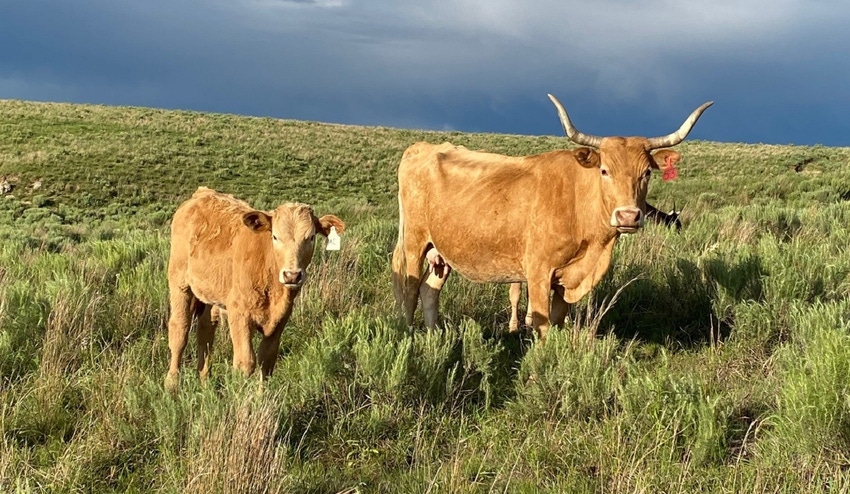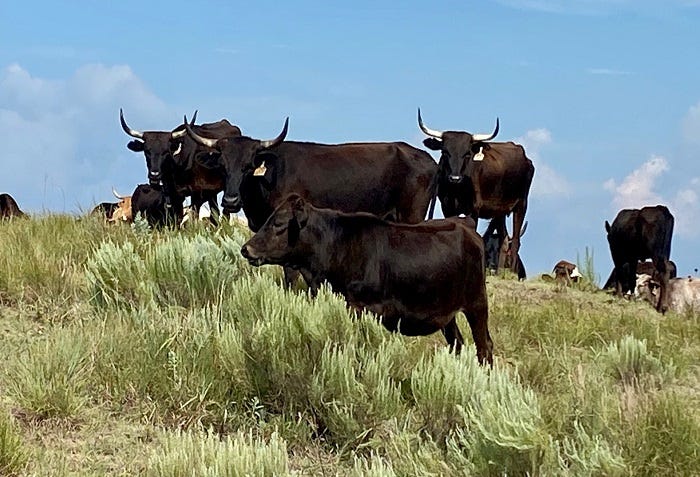November 14, 2020

As a cow-calf producer, you have more important issues to tackle than worrying about whether your calves top the market.
Sure, it’s great that packer profits are being investigated. More small independent processors would help. But don’t just sit around and wait for that stuff to happen. The market will always be risky and will always have ups and downs. Do not depend on high market prices and government-led industry reform for profit! You need to take control of your own business and insulate yourself from market risk.
The following factors have much more impact on your bottom line than cattle prices do.
Stop maximum-production paradigm
For the last 50 years in the beef industry we have been operating under the paradigm to “raise the biggest calves, the fastest, no matter what you have to do.” We are going broke and losing ranches faster than ever. If input-driven maximum animal performance was really the answer, we should all be rich by now.
Low costs beat the market
In the last 50 years, the price of livestock production inputs has risen four times faster than cattle prices. The cost of raising a calf has doubled in just the last 15 years. This statistic comes from Pharo Cattle Company quoting the Standardized Performance Analysis database and other sources. This trend shows no signs of reversing.
You have to learn to manage cattle without inputs or with very low inputs. How? Learn first about soil health because pasture and animal health are built upon it. Biologically active soils grow nutrient-dense forages, which supply livestock with the nutrition they need for economical growth and immune strength. Wild bovines thrived this way for thousands of years without human intervention. Then we started interfering with natural selection and keeping weak genetics in production. Now, modern cattle regularly fall on their faces without our pampering.
Put your herd back in its natural environment, on actively managed pasture, on its physiologically dictated diet (forages), and that will require you to change to moderate-producing genetics with excellent endocrine function, fleshing ability and fertility.
Stop chasing premiums
People say, “I have to calve in January and push the feed to them and raise large-framed cattle because otherwise the calves won’t sell well.”
Somewhere along the line, cow-calf producers started letting feedlots and packers dictate their decisions. If you can make more money producing something that doesn’t appeal to the commodity market, do that and find another market.
Cutting your expenses by 10% has a bigger effect on your bottom line than making 10% more revenue, said the late Colorado rancher and author Chip Hines. When you stuff cattle full of inputs trying to get 100 more pounds on a calf, those 100 pounds often sell for less than they truly cost to put on. That’s been shown by research at several universities.
Take the opposite approach. Focus on cutting costs and ignoring your neighbors’ opinions, not on squeezing more revenue out of each calf. Think about this: If you get $100 less for a calf, you’re still ahead if you’re able to keep the pair for $200 cheaper through the year!
My boss and I both meet with derision from other producers when we talk about the Corriente cows we raise here on Alexander Ranch in Kansas. Yes they are small, ugly, and lack musculature. But we will be selling black, dehorned calves out of them, sired by a small-framed Angus bull. The mamas eat next to nothing, and that includes a considerable percentage yucca, sage and other things considered generally to be weeds.
For comparison, the Angus replacement heifers we are custom grazing are struggling with foot rot, flies and pinkeye, whereas the Corrientes don’t. We are saving so much money on feed, health products, calving losses (which are extremely rare), and increased carrying capacity, due to them being so small, that we literally do not care what the calves will bring on sale day.
Incidentally, there are others who use this same or a similar production system.

Economic optimum stocking rate
Being overstocked and having to bring in feed, or being understocked and leaving bought-and-paid-for resources unused are both bad. The right stocking rate for your operation is that at which your gross margin per acre is highest, according to Jim Gerrish, long-time grazing consultant and owner of American Grazinglands Services. Gross margin is sale revenue minus direct/variable costs, and excludes overhead costs. Gross margin per acre is that answer divided by the number of acres used to produce that sale revenue. Use all your grass!
At Alexander Ranch, we can build single-strand, electric-cable permanent pasture divisions for 13 cents per linear foot. This more than pays for itself within the first year, because now that we have such good control over grass utilization, we can run at least double the county average stocking rate without any harvested feed.
Own appreciating assets
Aside from equipment depreciation, cow depreciation is one of the biggest costs to a cow-calf operation. Many don’t even keep track of it. It’s generally claimed that a cow needs to have anywhere from three to six calves before you recover the cost of raising or buying her. But only 25% of most ranches’ cows make it past having three to four calves.
To make matters worse, a cow loses value rapidly ever year after around age 5-6. So as she gets older, more and more of the revenue from the sale of her calf goes to just fighting its mother’s value loss annually. This is the brainchild of Wally Olson, a rancher from Claremore, Oklahoma. Trying to get 15 calves out of granny cows doesn’t work out often enough to adopt it as an economic strategy, unless you buy them after they are depreciated. Instead, one alternative is to keep all of your heifers and sell all cows when they reach 4-6 years old, at the peak of their value.
Also, keep heifer development and annual cow costs at rock-bottom low. Don’t baby them in a quest for high conception rates. Cull the ones that can’t produce without crutches into a value-added channel, like making ground beef out of older cows and feeding out open heifers. Over time you will build a resilient herd that doesn’t need large inputs of your money to produce.
Greski writes from her home hear Medicine Lodge, Kansas.
You May Also Like




